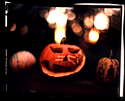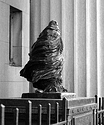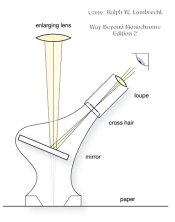As facts go, DOF tables are a bit squishy, since they may only be calculated on the basis of subjective assumptions about acceptable sharpness, which rely on further assumptions about viewing distance, normal human vision, the resolution of the film/paper, etc. When the DOF scale on my lens tells me that everything I want to be in focus will be acceptably sharp at f:8, chances are I'll really need f:11 for f:16 for it to look acceptably sharp to me.
Maybe I'm a bit unsure as to how one calculates DOF for an enlarger, since the print isn't going to be enlarged beyond its own size, and the DOF formulas used for camera lenses depend on assumptions about the enlargement of the negative. I've noticed that the CoC values in Ralph's table are the same as those normally used for computing DOF for camera lenses, but I'm not sure this makes sense for enlarging. The implications are that an 8x10" print from a 35mm neg needs to be sharper than an 8x10" print from a 4x5" negative, and that an acceptably sharp 8x10" print should have the same resolution as an acceptably sharp 16x20" print. It may not even make sense to call the depth on the paper side "Depth of Field," if we regard an enlarger as a camera that makes an image of the negative (arguably the "field" side) on the paper (arguably the "focus" side), but that's a matter of semantics and convention, because I think we agree on the geometry. It would seem to me that the value for acceptable circle of confusion when computing DOF for enlarging should be based on the print size rather than the negative size.
Even if we accept this table, what does it mean to say that the DOF for a 35mm negative projected to 16x20" at f:4 is 53mm? Do I really believe that I could focus the negative with a grain focuser, and then put a book that was about an inch thick under the easel, and the print would be acceptably sharp? Perhaps it would be within the resolution of the paper at normal viewing distances for 16x20" prints, but I don't believe that I couldn't tell the difference with a grain focuser, and possibly by looking at the print at closer than normal viewing distances.
I've certainly used the DOF at the enlarging easel to correct converging lines by tilting the easel and stopping the lens down with an enlarger that doesn't allow for Scheimpflug correction, but even then I see it as a tradeoff, where I'm sacrificing a little sharpness for the sake of the overall composition.








